Edouard Malingue Gallery, Hong Kong is thrilled to present ‘R for Rhombicuboctahedron, vol. 8’, a new chapter of ‘The Critical Dictionary of Southeast Asia’ (2012-present) by internationally acclaimed artist Ho Tzu Nyen (b. 1976, Singapore). Akin to an organism, it is part of an ongoing project that grows, generates and provides critical insight into the pluralistic definitions of the territories under this nomenclature. Born out of recognition for how sweeping the term ‘Southeast Asia’ is, it considers what makes up an area not unified by language, religion or political power. The exhibition is a part of an “endless series of possible Southeast Asias”[1], which collectively form a torn yet interconnected terminological territorial tapestry.
Described as “a platform facilitating ongoing research, a matrix for generating future projects and an oracular montage machine” [2] ‘The Critical Dictionary of Southeast Asia’ (CDOSEA) is part of a database of texts, music, online images, that according to an algorithm selects and weaves different sounds and images to form an “Abécédaire” first developed while in Residency at the Asia Art Archive. Presented as a video and a series of lightboxes throughout the gallery space, ‘R for Rhombicuboctahedron, Vol. 8’ takes as a launching pad the definition of a rhombicuboctahedron – an object with 26 sides – which numerically mimics the number of letters in the Latin alphabet and thereby the structural parameters of ‘The Critical Dictionary of Southeast Asia’.
At the heart of the exhibition is an algorithmically-edited video on an infinite loop at the end of the gallery space; video materials are detourned from online sources and recomposed in endless variations by the algorithms created by Ho Tzu Nyen in collaboration with Jan Gerber and Sebastian Lütgert. These same algorithms also trigger a wall of LED lights that pulsate and burn away the video images. This stream of images and light are accompanied by the incantatory voice of ongoing Singaporean musical collaborator Bani Haykal.
Permeating the space is a new series of lightboxes. These lightboxes each serve as a physicalised condensation of the complex processes underlying the project of CDOSEA. For example, “CDOSEA: Dice Rhombicuboctahedron” (2019), assembles 26 images (one for each letter of the alphabet) from the algorithmically assembled archive into a moving 26 sided dice. “CDOSEA: Flat Rhombicuboctahedron” (2019) on the other hand, is a flattened-out version of the rhombicuboctahedron to be mentally reconfigured by the thinking viewer. Two further square lightboxes consist of 26 images overlaid through the technique of the lenticular print, and finally a single square and gridded lightbox functions as a lenticular, two-dimensional index of all the images assembled for this version of the CDOSEA.
‘R for Rhombicuboctahedron, vol. 8’ follows the pillars of Ho Tzu Nyen’s complex and considered practice. There is a pervasive sense of ambiguity, theatricality and unease, augmented by a collection of historical, literary and pop culture references. Centrally, Ho charges the viewer emotionally and physically to deliver a multisensory consideration of what we know and crucially, do not. Indeed, this work, the larger overarching project, and the projects that have stemmed from it, may be described as a “dense constellation of particles—constantly shifting shape” [3], giving way to new layers, discoveries – elements of interpretation.
Ultimately, Ho’s work is one of multiple engagements, readings and experiences. Careful and deliberate, his practice sits on the cusp of investigative research, the work of a true scholar, and that of a proficient as well as articulate narrator. As described by Ho himself, however, “spotting references is never a crucial thing in my work. I always try to produce work for an imaginary spectator who might have zero understanding of these references” [4]– a comment that reminds us that Ho’s practice is not about projection of what we know, it is about opening the door onto something we did not.
Ho Tzu Nyen has been widely exhibited with solo exhibitions at Kunstverein, Hamburg (2018); McaM, Shanghai (2018); Asia Art Archive, Hong Kong (2017); Guggenheim Museum, Bilbao (2015); Mori Art Museum, Tokyo (2012); Artspace, Sydney (2011); Contemporary Art Centre of South Australia. He also represented Singapore at the 54th Venice Biennale (2011). Recent group exhibitions include Sharjah Biennial, Sharjah (2019); Gwangju Biennale, Gwangju (2018); Dhaka Art Summit, Dhaka (2018); ‘2 or 3 Tigers’ at Haus der Kulturen der Welt, Berlin (2017). His works have been presented at QAGOMA, Brisbane (2016); Guggenheim Museum, New York (2013); Times Museum, Guangzhou, China (2013); Witte de With, Rotterdam (2012). He has also participated in numerous international film festivals including the Sundance Film Festival in Park City, Utah (2012); 66th Venice International Film Festival (2009); 41st Directors’ Fortnight at the Cannes International Film Festival in France (2009). Ho was an Artist-in-Residency at Asia Art Archive, Hong Kong (2013), and also the DAAD, Berlin (2016 – 2017).
[1] Ho Tzu Nyen in conversation with Heidi Ballet, 2017
[2] https://cdosea.org
[3] Ho Tzu Nyen ‘Clouds of Density’ by Daryll Wee, May/June 2011
[4] Ibid.
The Critical Dictionary of Southeast Asia Volume 8: R for Rhombicuboctahedron Ho Tzu Nyen
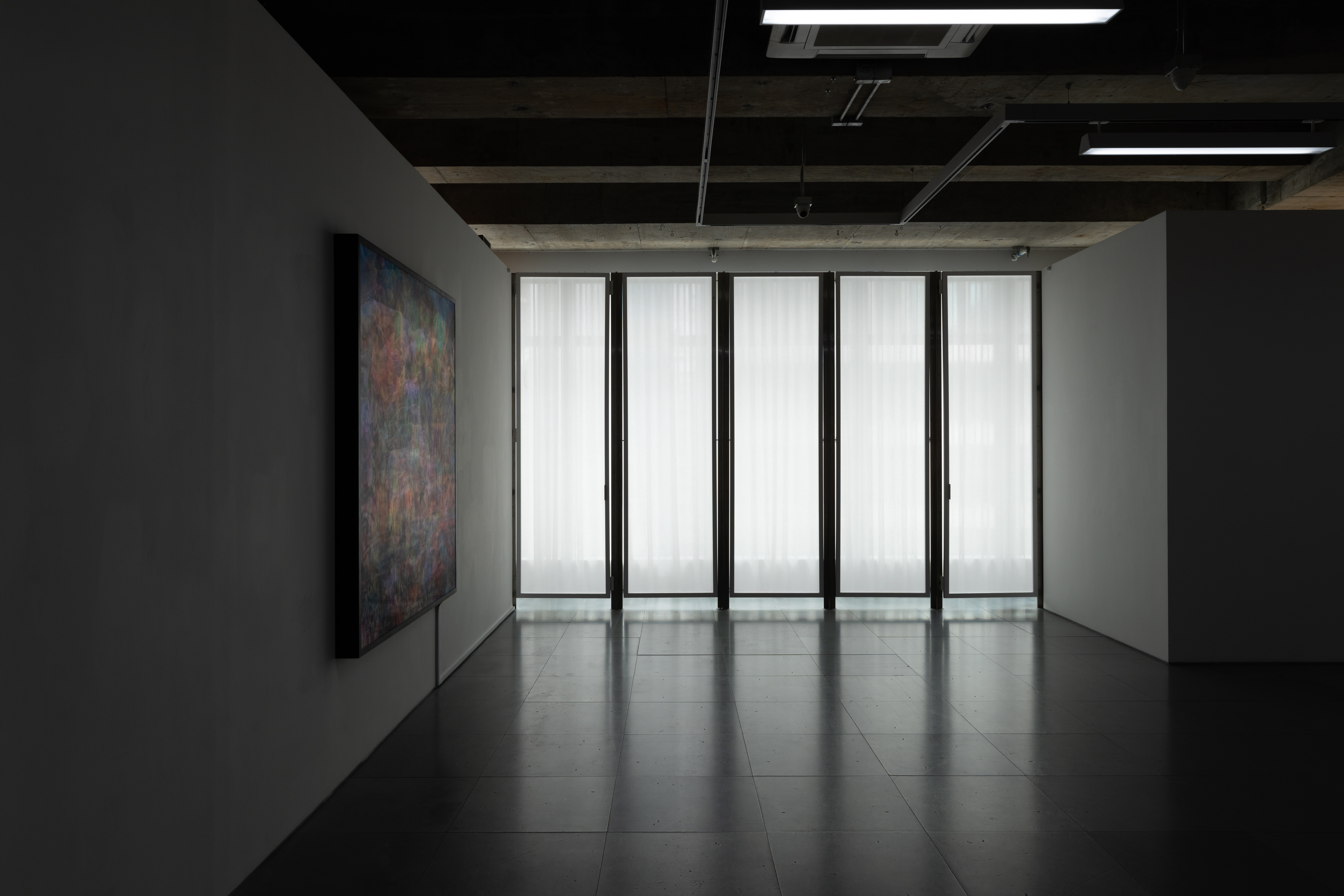
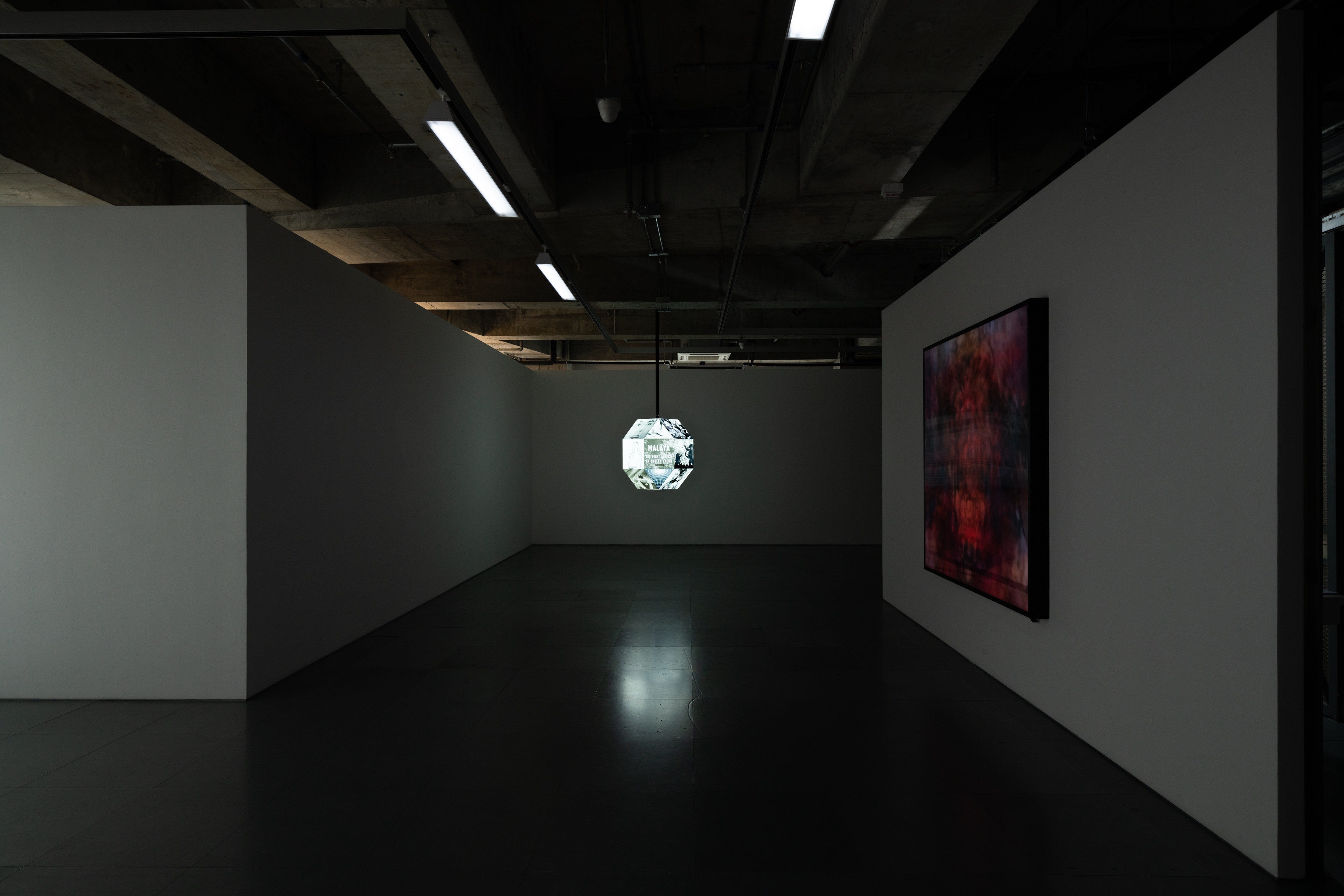
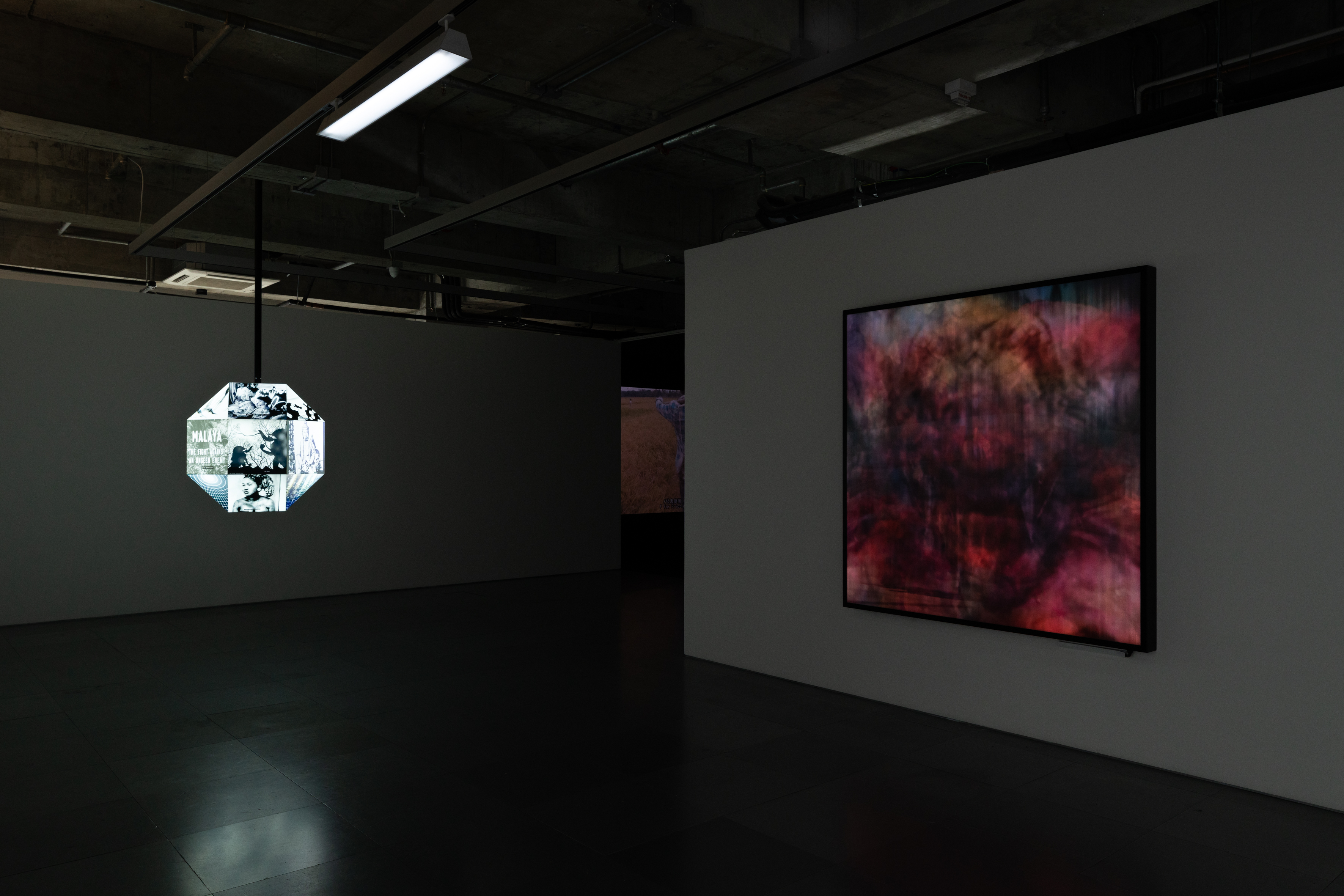
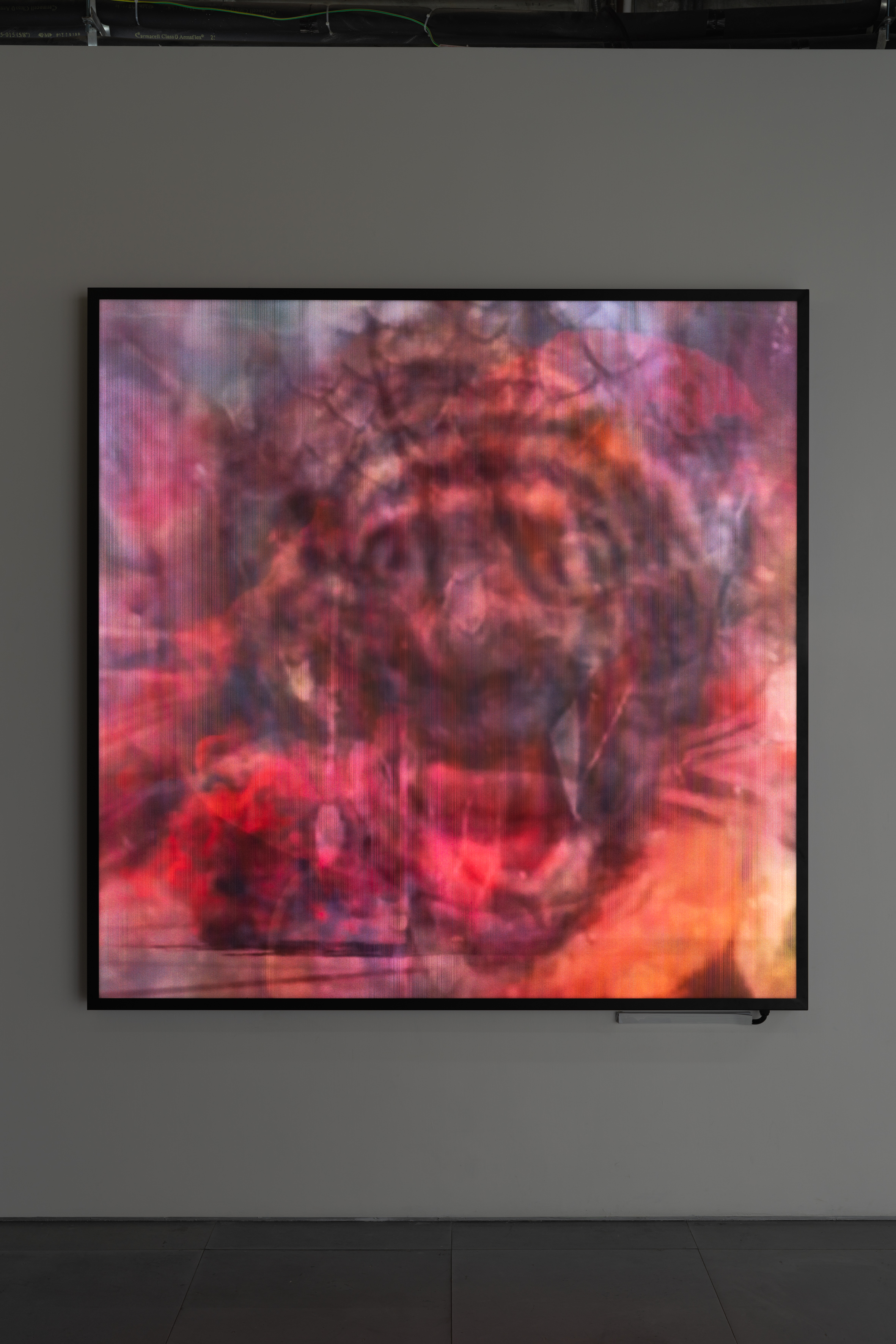
Lenticular print, LED light box, metal frame
180 x 180 x 10cm, 80 kg
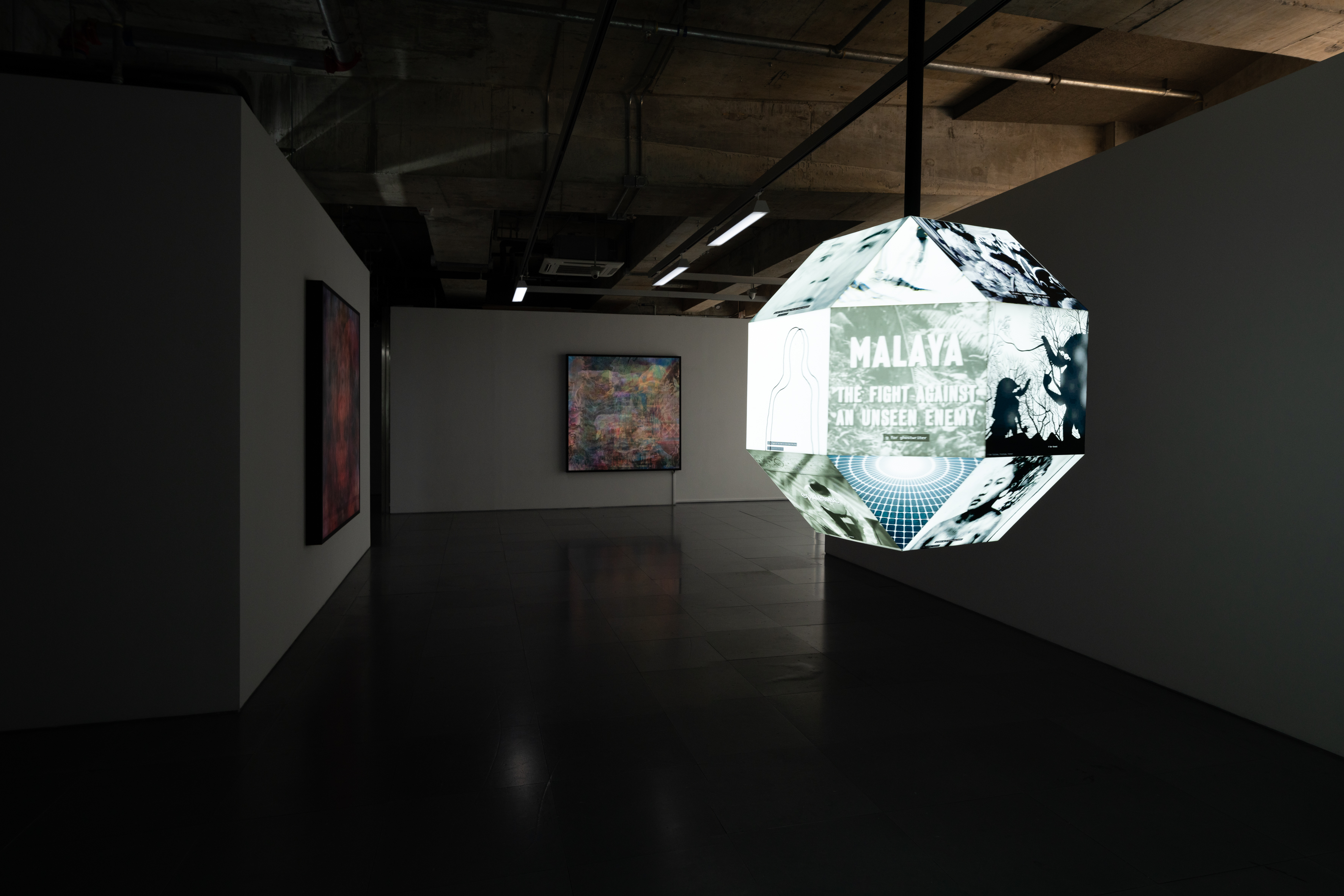

Lenticular print, LED light box, metal frame
180 x 180 x 10cm, 80 kg
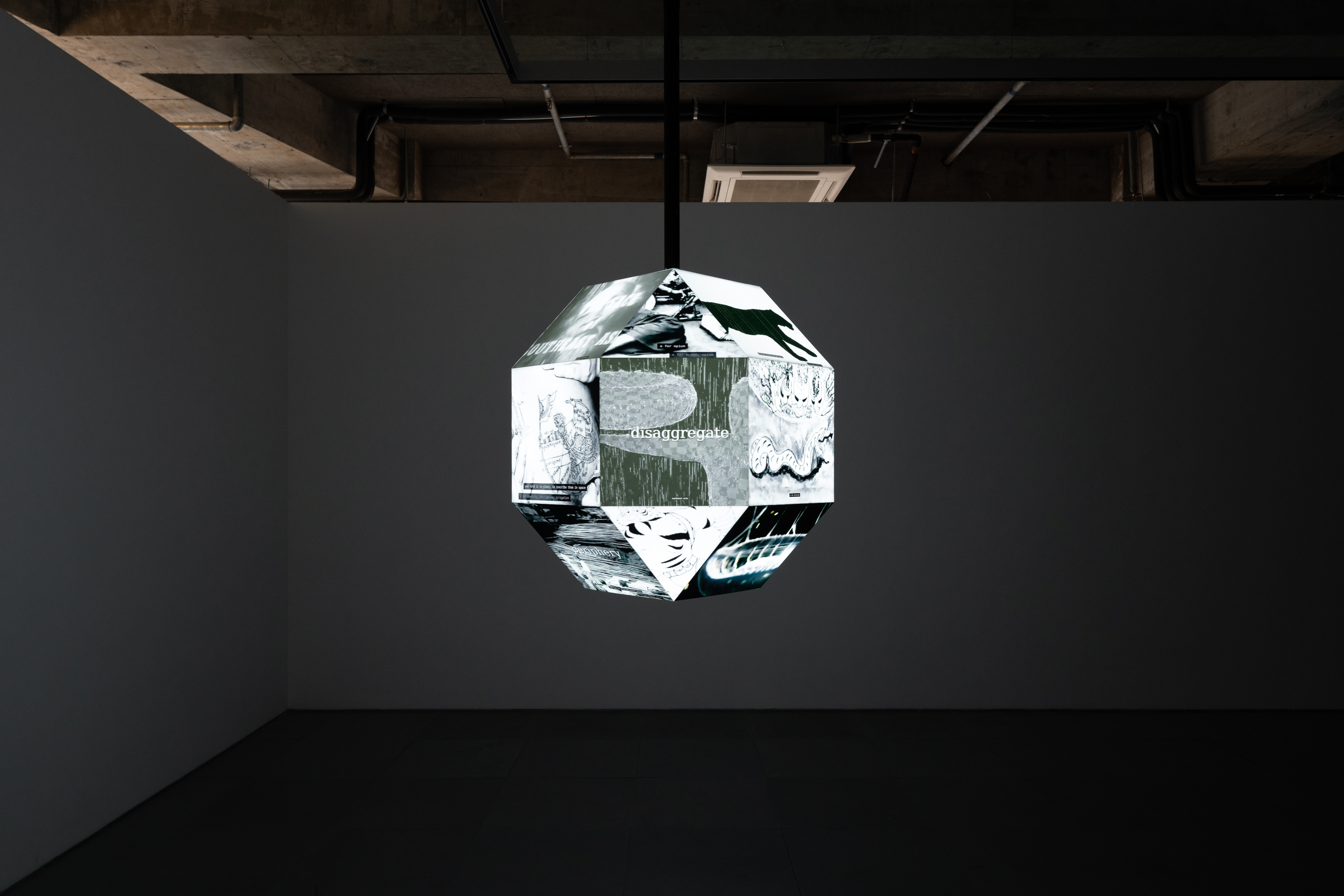
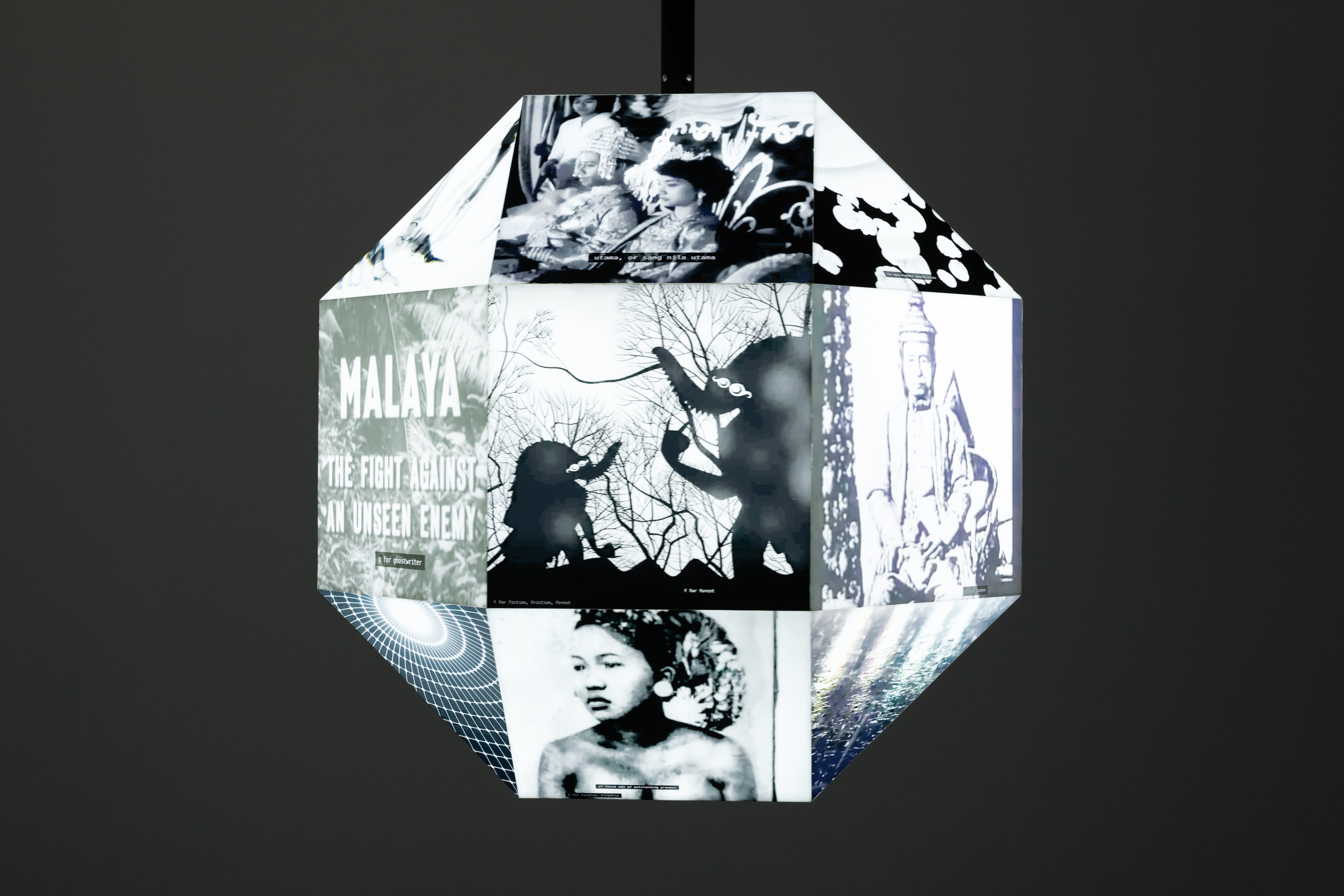
Prints on acrylic, motor, light box, tube
Dia. 1m
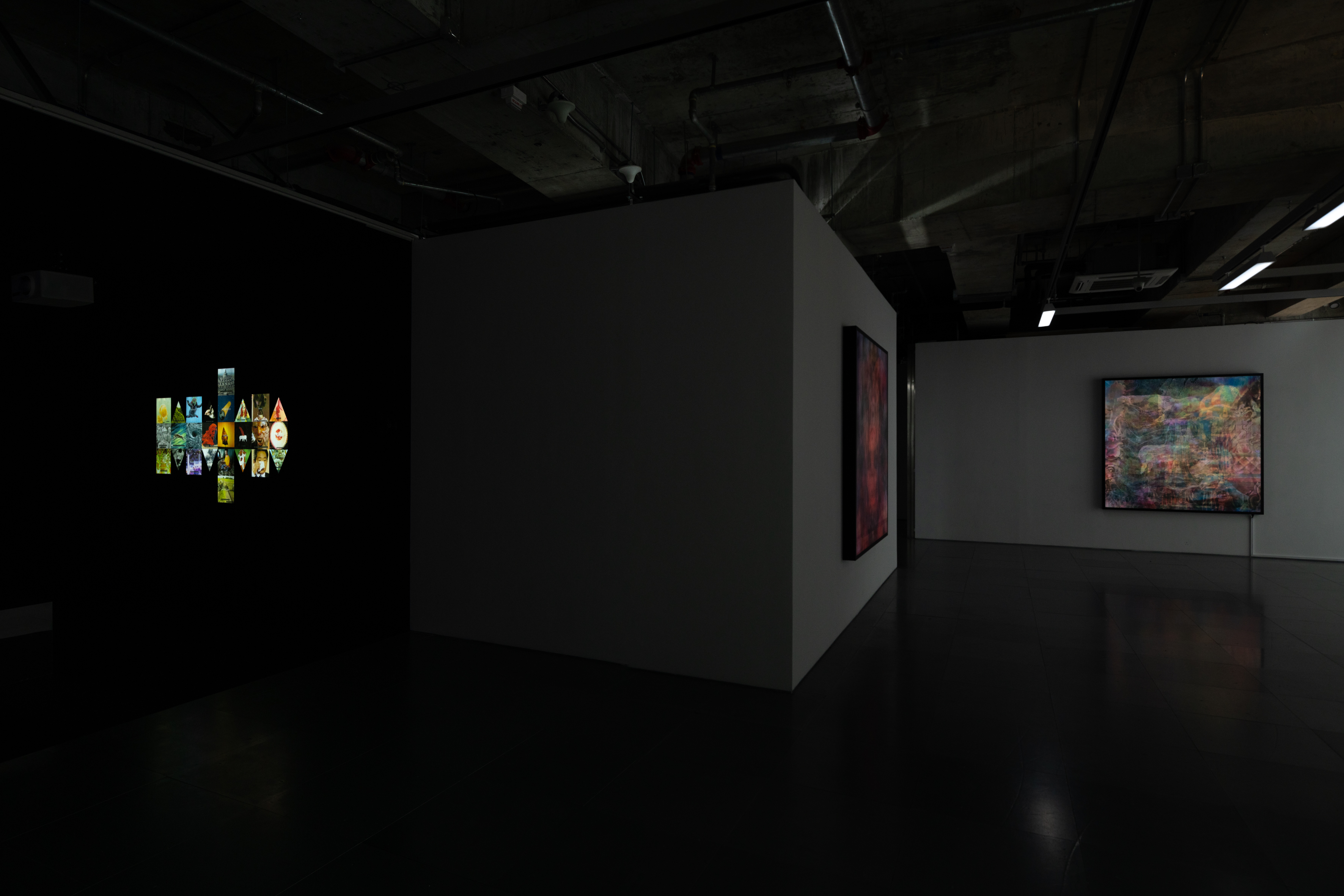
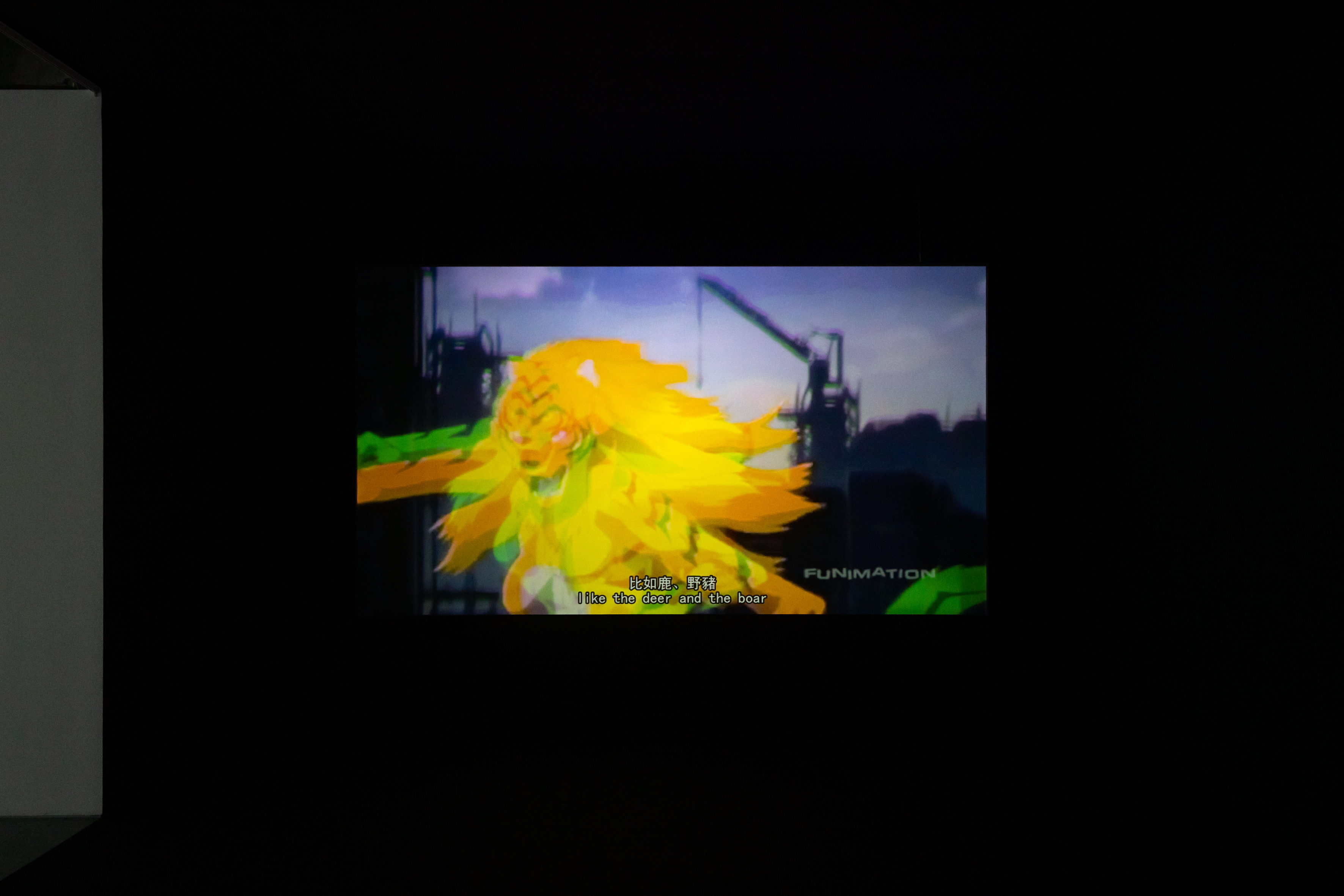
Single channel HD video, algorithmic editing system, 5 channel sound, LED Lights, 1PC
Duration: Infinite
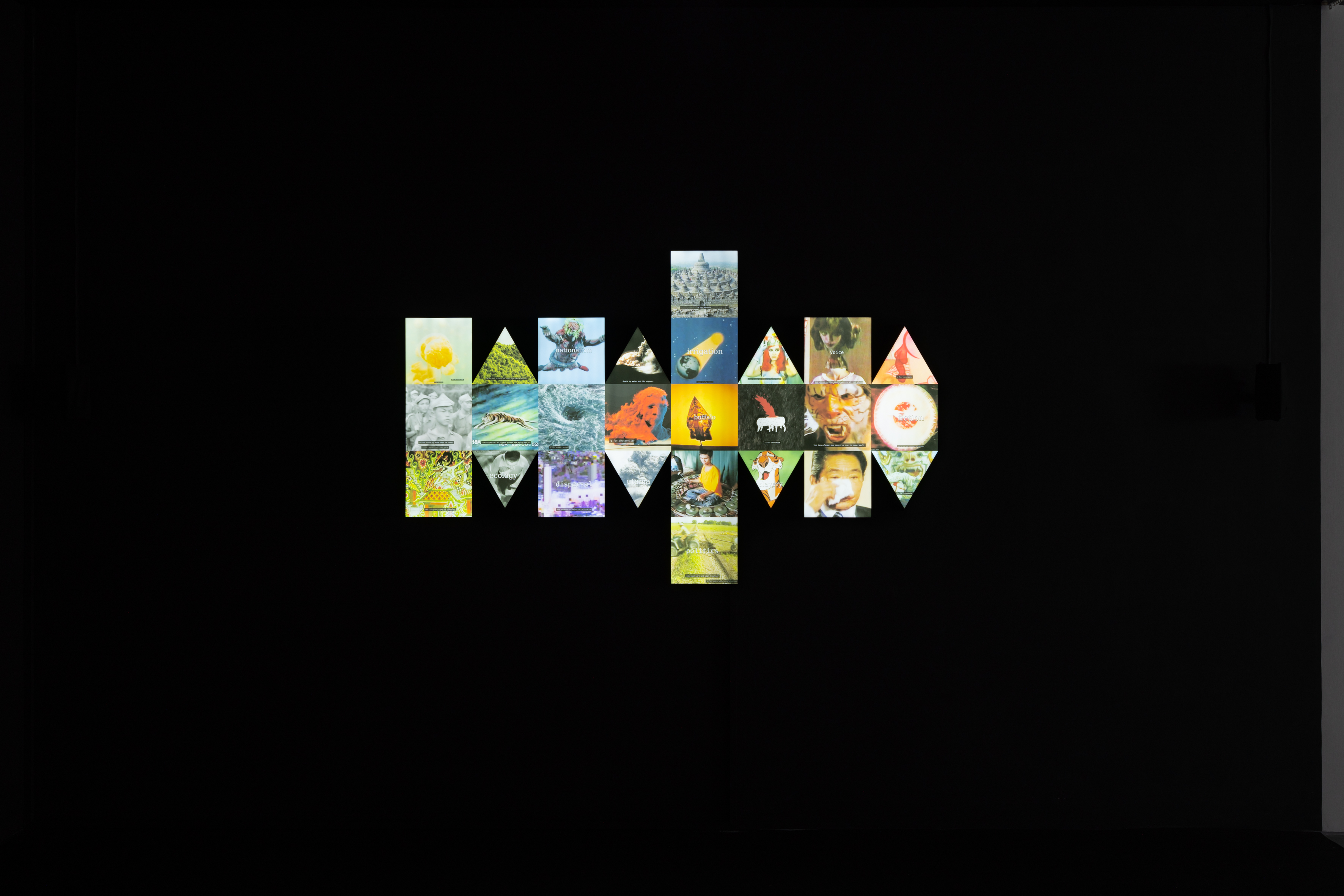
Prints on acrylic, light box, metal frame
193 x120 x 3 cm